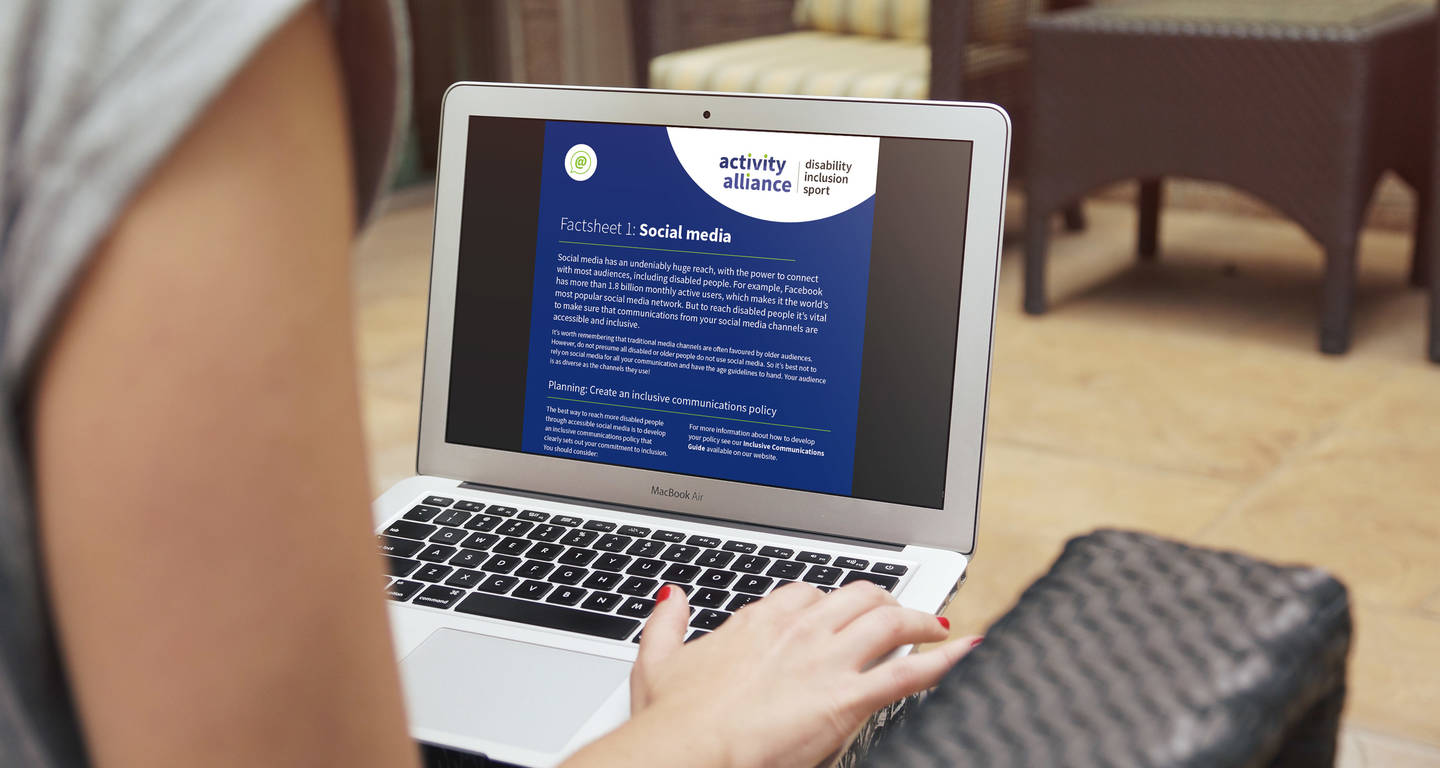Reaching more people at home, inclusively and accessibly
Now more than ever, effective marketing and communications are essential for all organisations. We are all working in new creative ways so we can reach and inform more people. This includes disabled people and people with long-term health conditions. That’s why the key principles for inclusive and accessible communications can support your organisation. Our guidance and teams are here to help. Together, we can ensure more people have greater access to your exciting online campaigns or activities.

Did you know?
Disabled people in England are less likely than non-disabled people to have accessed the internet in 2019 (78 per cent vs 95 per cent).
18 per cent of disabled adults had still never used the internet compared with 4 per cent of non-disabled adults.
(Office of National Statistics, Internet Users 2019)
Activity Alliance is passionate about promoting and supporting inclusive marketing and communications. As well as our Inclusive Communications Guide and film, we have a range of fact sheets to guide you through the top principles.
Despite advances in technology, there are still a number of different factors preventing groups of people or individuals from receiving communications. This is heightened, especially during times like this when more focus is given to digital communications.
It’s important to consider the whole customer journey from initial contact to the after-service. Everyone needs to have equal access to your activities to reap the physical and mental health benefits. Spending more time, energy or money trying to find the information is annoying and off-putting.
There are approximately 14 million disabled people in the UK. It is not only ethically right to enable more customers to engage in your services, it makes business sense.
As with any other large group, there can be no one-size fits all approach to how to communicate with disabled people. The way in which some disabled people access communications may be different to non-disabled people. People with different impairments have different needs or experience different barriers to accessing information.
Why would you, especially during this unprecedented time, not want to reach as many people as possible?
Although you may only have access to digital platforms right now, traditional communication methods will still matter for many in your audience.
You may want to consider the below examples in your planning:
- When putting activity leaflets through the door, consider your contact methods. You may only want people to contact you by email or telephone, but for many this may not be their accessible preference. Make sure you have a few ways people can contact you.
- Consider how accessible your activity videos are for people who are D/deaf or have hearing impairments. Do they have subtitles or British Sign Language interpretation? You can add subtitles on YouTube yourself.
- When instructions rely on visual actions, videos can cause barriers for some people with visual and other impairments. Some video platforms enable you to automatically generate a transcript, then edit to correct the errors. You can add guides in audio files and audio descriptions too.
- Easy read is a great format for your downloadable information. This is often an alternative format for people with learning impairments or whose first language isn’t English.
- Find the right channels for your target audiences. Some people in particular age groups or with certain impairments are less likely to be on or feel less confident on digital or social media. There are age restriction guidelines to be aware of too. Not everyone has access to a smart phone or wifi.
- Make it easier for everyone to join in. Have fewer processes to sign-up and/or pay. Take away the lengthy digital click-through. Sometimes a friendly note through residents’ doors is more personal for those who don’t have access to a screen.
- Talk to disabled people you know. Ask and involve disabled people in the planning and delivery.
Activity Alliance is enabling organisations to support disabled people to be active. We are delighted to see organisations’ creative ways to bring activity into people’s homes. Now and beyond lockdown, we encourage you to consider their accessibility and inclusion so more people can enjoy your activities.
Below are links to helpful resources:
- Activity Alliance inclusive communication resources
- Activity Alliance getting active at home
- Dos and don'ts on designing for accessibility
- Making your social media accessible - RNIB
- Best video conferencing apps and software for accessibility - Big Hack
- The Big Hack by Scope is calling for businesses to improve their digital services for disabled customers. They have lots to offer and services for your organisation.
- AbilityNet helps people of any age and with any disability to use technology to achieve their goals at home, at work and in education. They provide specialist advice services, free information resources and by helping to build a more accessible digital world.